01:00:57

In digital circuits, materials with low permittivity separate the conducting parts from one another; materials with lower permittivity provide better electrical and magnetic insulation. Continuous reduction in scale drives the optimization problem of lowering the permittivity of the insulator as much as possible, without compromising mechanical integrity, as quantified by the Young’s modulus. ...
01:06:01

Substrate influence is a common problem when using nanoindentation to evaluate the elastic modulus of thin films. In this session, an elastic model for film-substrate interaction is presented which returns accurate film moduli even when substrate influence is substantial. The new model is applied to the interpretation of nanoindentation data on various thin films, including low-k films on sil...
50:24
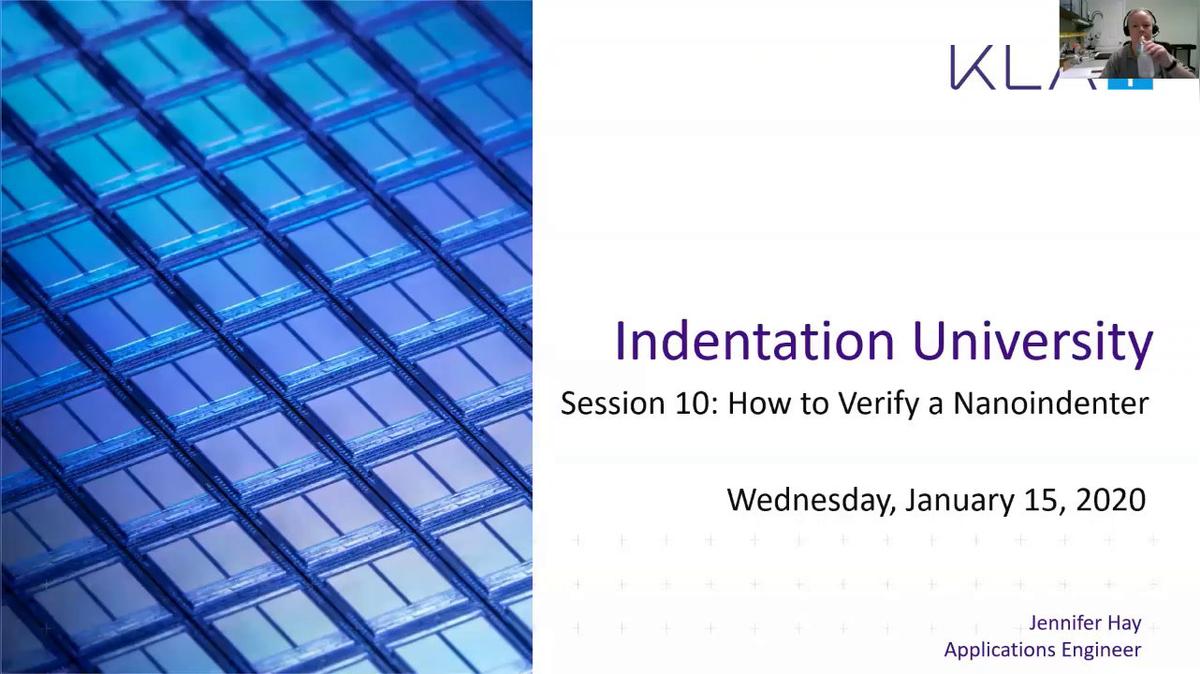
How do you know that your nanoindenter is working properly? In this session, Ms. Hay demonstrates the verification process and record keeping for nanoindenters in the KLA contract-test laboratory. Calibration, indent placement, and total performance are all quickly and easily verified using this procedure.
01:01:57

Two nanoindentation calibrations are accomplished by means of indentation experiments on a reference material. These are the load-frame stiffness calibration, which quantifies the expected flexure in the test equipment, and the area-function calibration, which quantifies the precise shape of the indenter. This presentation explains how these calibrations affect nanoindentation analysis, and how...
01:12:49
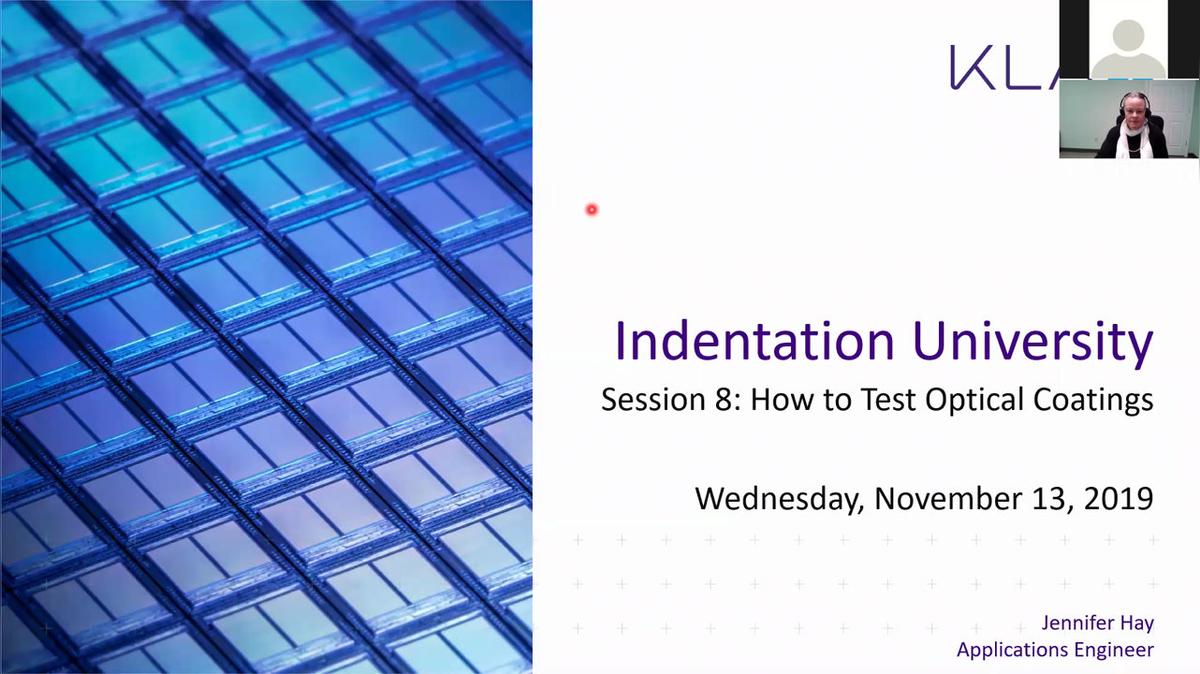
Although optical coatings are designed for the control of light (anti-reflective, reflective, splitting, filtering, etc.) it is their mechanical properties which govern longevity. Scratches at any scale lead to excessive absorption of laser energy causing localized thermal stress and ultimate failure. This session is a live demonstration of dynamic nanoindentation with the KLA iMicro nanoindent...
52:20
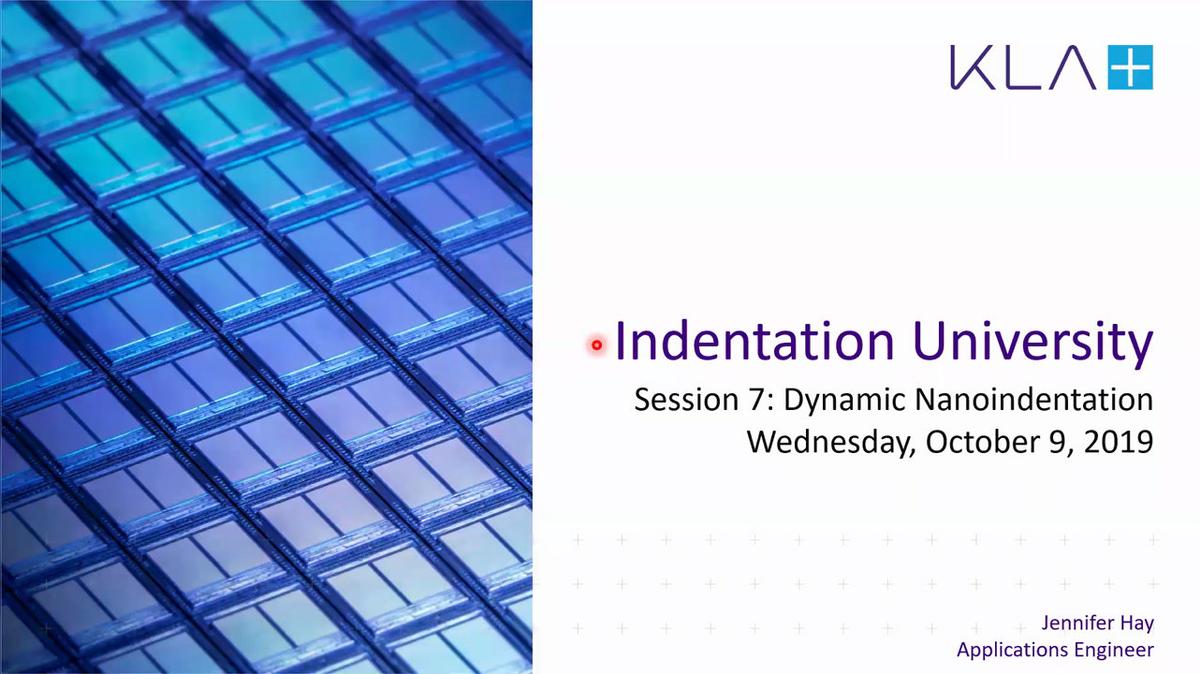
Jennifer Hay unlocks all of the analysis used in dynamic nanoindentation and the continuous stiffness measurement technique. The CSM technique is the greatest advancement in nanoindentation over the last 30 years.
56:49
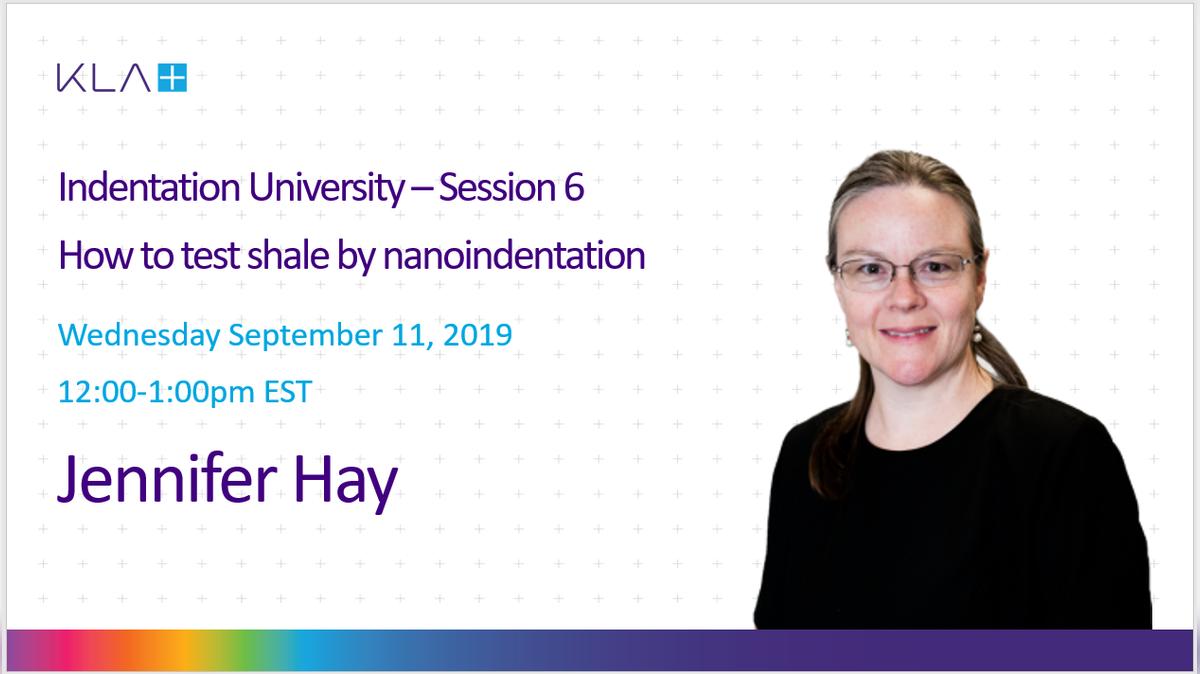
Knowledge of Young’s modulus is essential for the design and control of the extensive fractures required for harvesting natural gas from shale formations. Nanoindentation of drill fragments provides an economical and localized way to measure Young’s modulus of shale. This session is a live demonstration of standardized nanoindentation with the KLA iMicro nanoindenter to characterize shale. Ms. ...
52:42
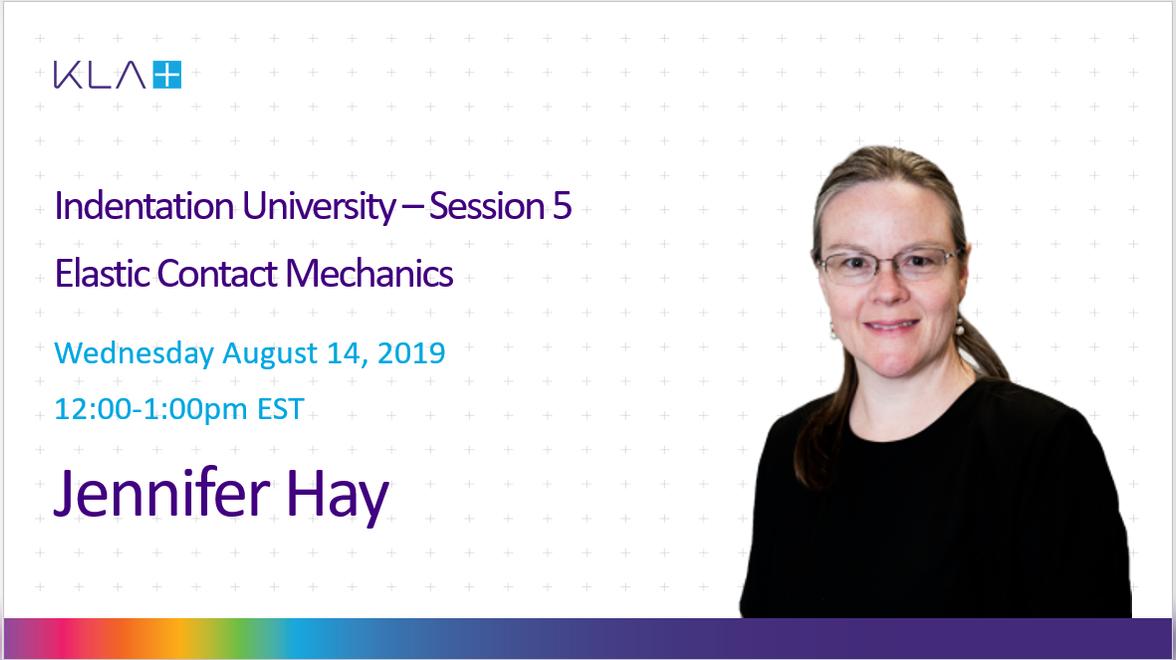
Force and displacement measurements obtained from instrumented indentation experiments are interpreted using elastic contact models, even when the contact causes plastic deformation. Elastic contact models specify the ideal relationship between force, displacement, and elastic properties. Such models are explained in this presentation. Ian Sneddon’s elastic contact model is given special attent...
53:38
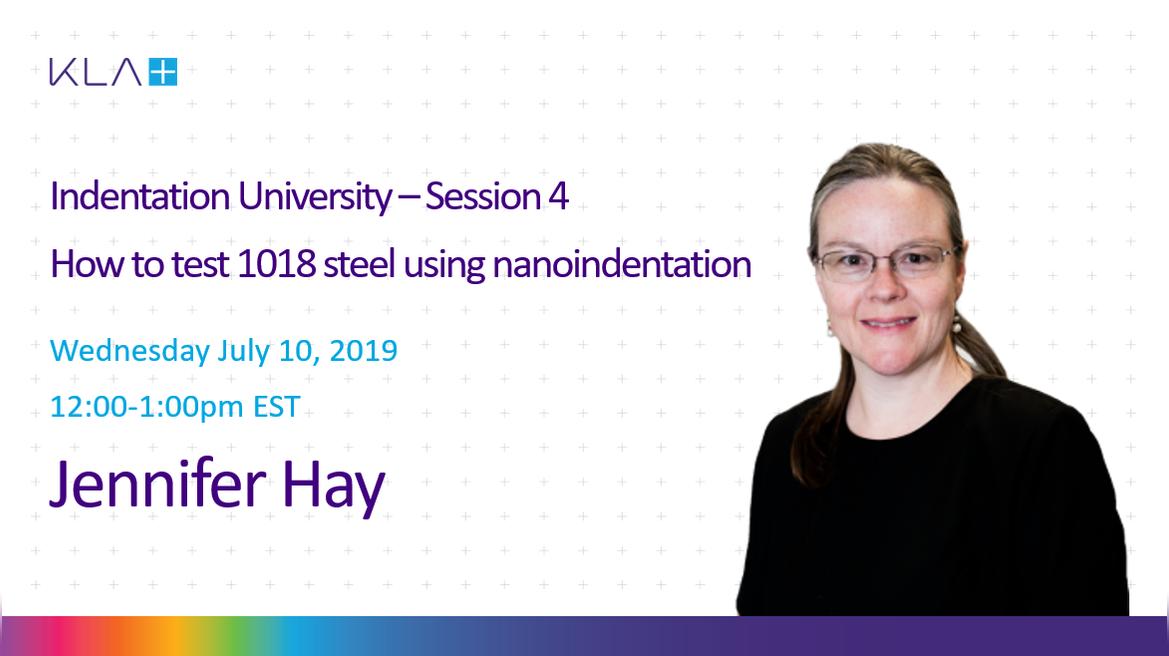
Low-carbon steels are the first option when designing with steel. They offer good machinability and excellent weldability. To some extent, the strength and ductility can be manipulated by various thermal and mechanical processes, such as working, annealing, and carburization. This session is a live demonstration of standardized nanoindentation with the KLA iMicro nanoindenter to characterize co...
01:01:00
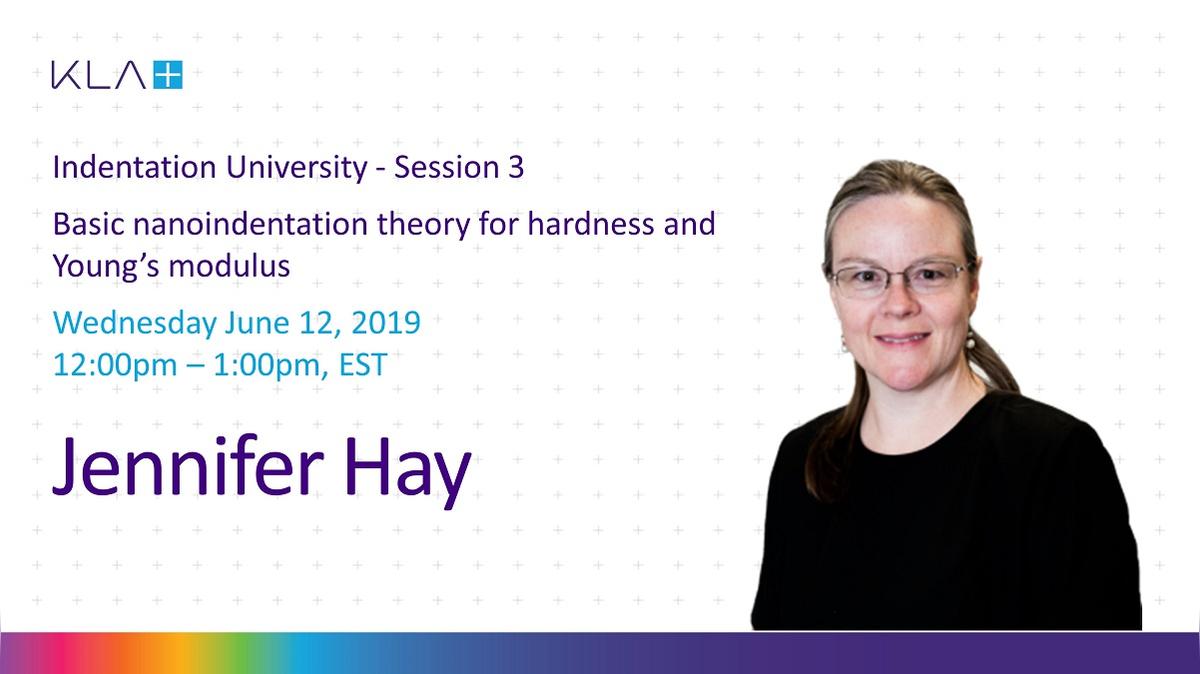
In its most basic form, instrumented indentation involves pressing an indenter of known geometry into a test surface while continuously monitoring force and displacement. In this session, we review the test and analysis commonly known as the “Oliver-Pharr” method for measuring hardness and Young’s modulus. The continuous measurement of force and displacement affords two important advantages ove...
57:39
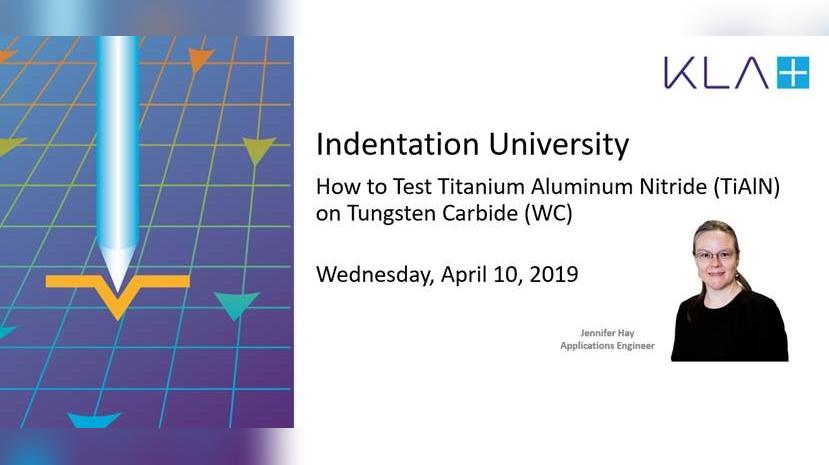
The first and most enduring application of nanoindentation is the characterization of hard coatings designed for mechanical and chemical protection of an underlying material. This session is a live demonstration of standardized nanoindentation with the KLA iMicro nanoindenter to characterize an industrial nitride coating on a tungsten- carbide substrate. Ms. Hay demonstrates sample mounting, in...
53:30
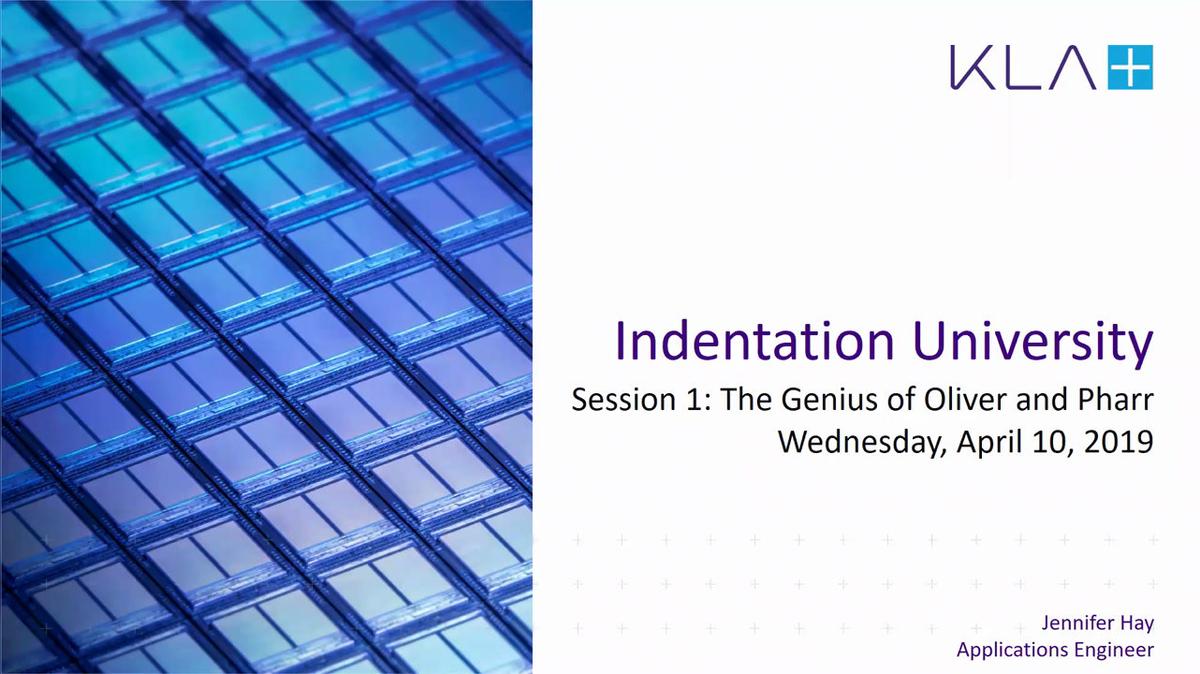
In 1992, Warren Oliver and George Pharr published an article that revolutionized hardness testing. The genius of Oliver and Pharr was that they devised a way to know the size of a hardness indentation without imaging it. This development disrupted Vickers and Knoop microhardness testing, which required direct measurement of the lengths of the indentation diagonals. Not having to image the inden...